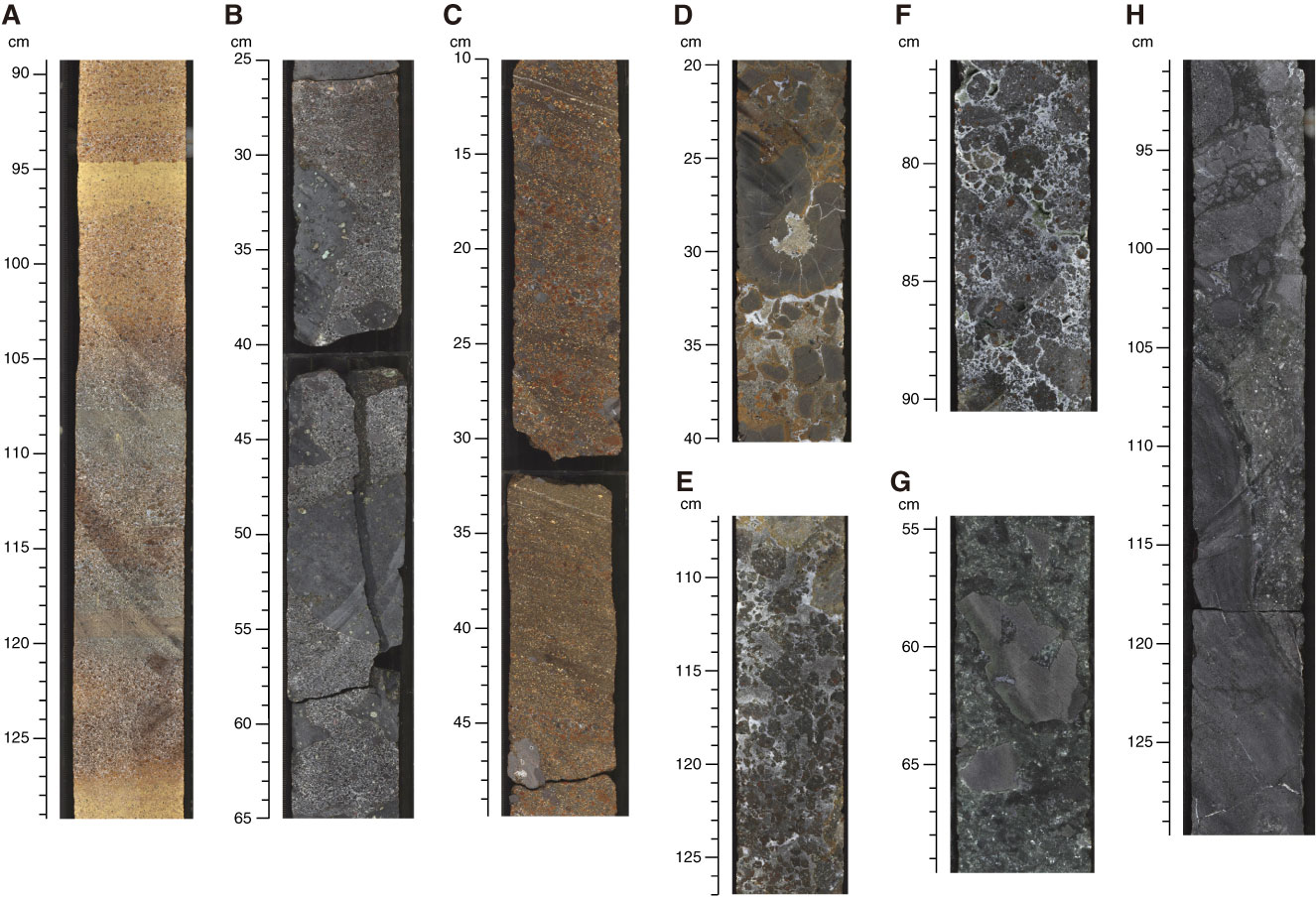
Figure F34. Close-up photographs of selected representative lithologies and lithofacies, Site U1374. A. Multicolor volcanic sandstone in Subunit IIA interpreted as air-fall volcanic products emplaced in a submarine environment with limited postdepositional reworking (interval 330-U1374A-2R-2, 89–129 cm). B. Grayish basalt conglomerate with bioclasts in Subunit IIE deposited in an intertidal to subtidal environment and believed to represent the first sedimentary record after or during the flattening of the top of Rigil Guyot at Site U1374 (interval 330-U1374A-3R-2, 25–65 cm). C. Multicolor volcanic sandstone in Subunit VIIB interpreted to have been emplaced on a shallow-marine slope as a hyperconcentrated flow (interval 330-U1374A-8R-1, 10–50 cm). D, E. Examples of magma-sediment (peperitic) interaction observed in Hole U1374A: (D) interval 330-U1374A-17R-3, 20–40 cm, and (E) interval 330-U1374A-23R-2, 107–127 cm. F. Poorly sorted breccia with irregular scoriaceous clasts that probably formed in a hydrovolcanic eruption (interval 330-U1374A-29R-1, 76–90 cm). G. Angular aphyric basalt clasts in hyaloclastite matrix (interval 330-U1374A-66R-6, 55–69 cm). H. Example of dike margins recovered in Hole U1374A: peperitic sheet margin in contact with hyaloclastite breccia (interval 330-U1374A-60R-1, 91–129 cm).

Previous | Close | Next | Top of page